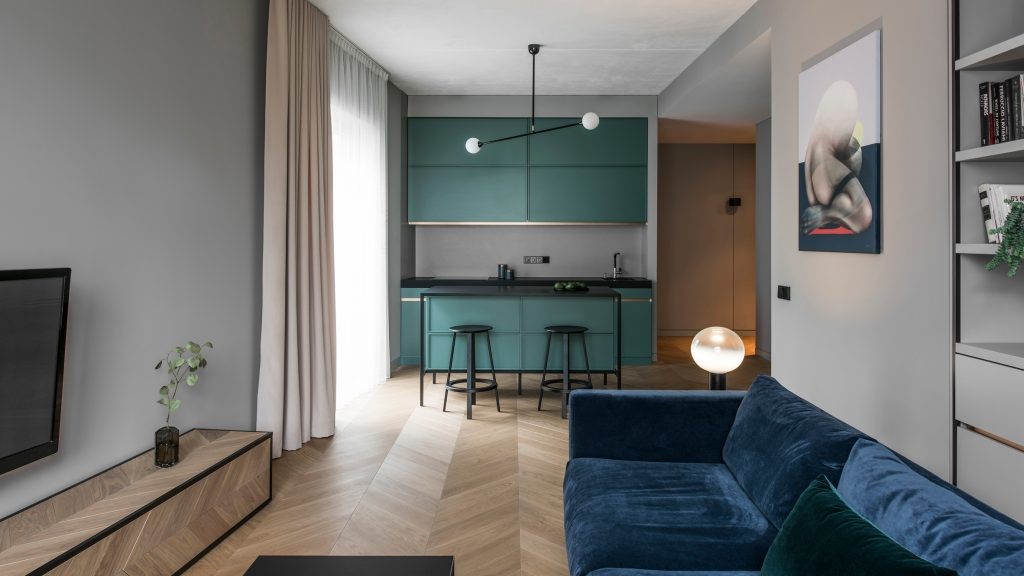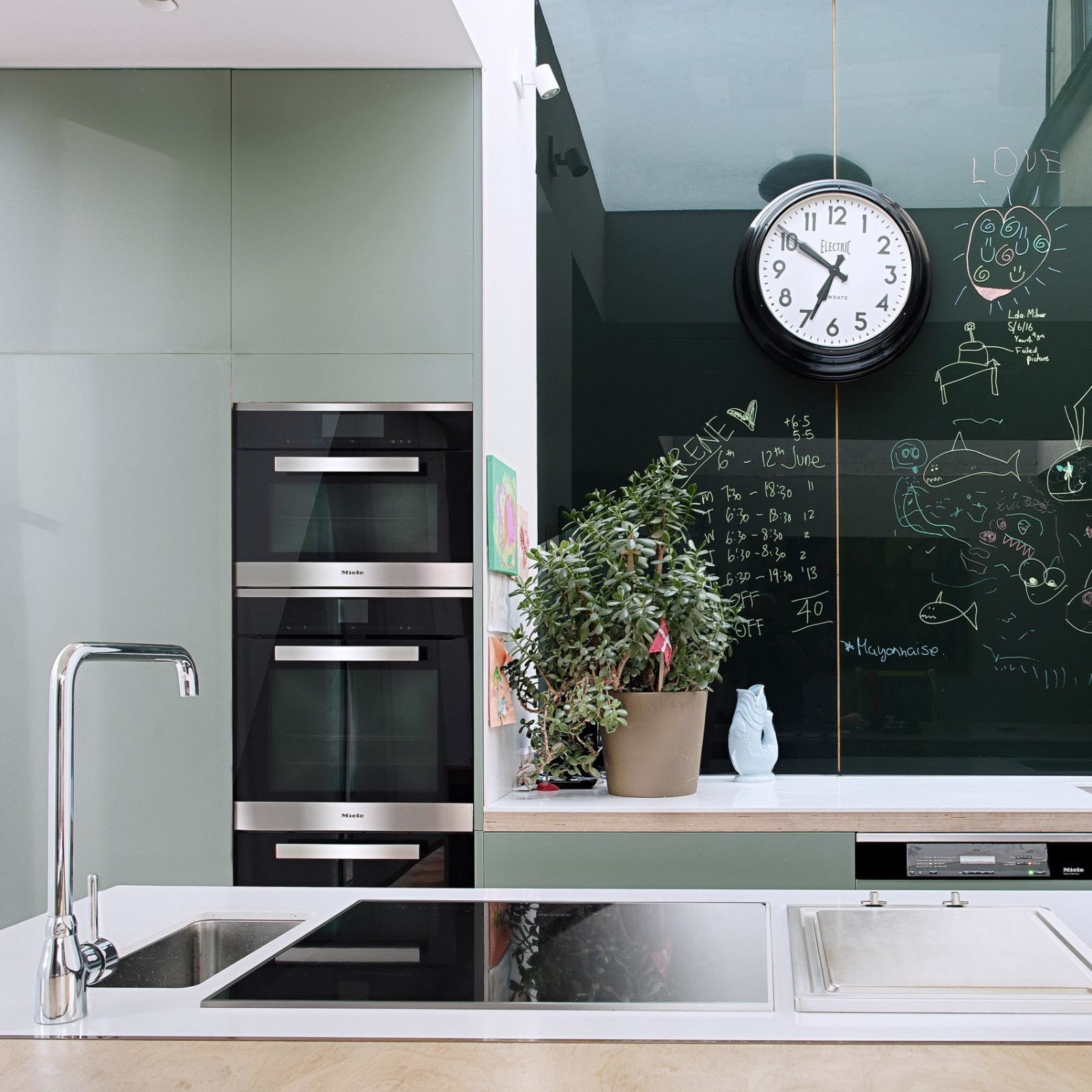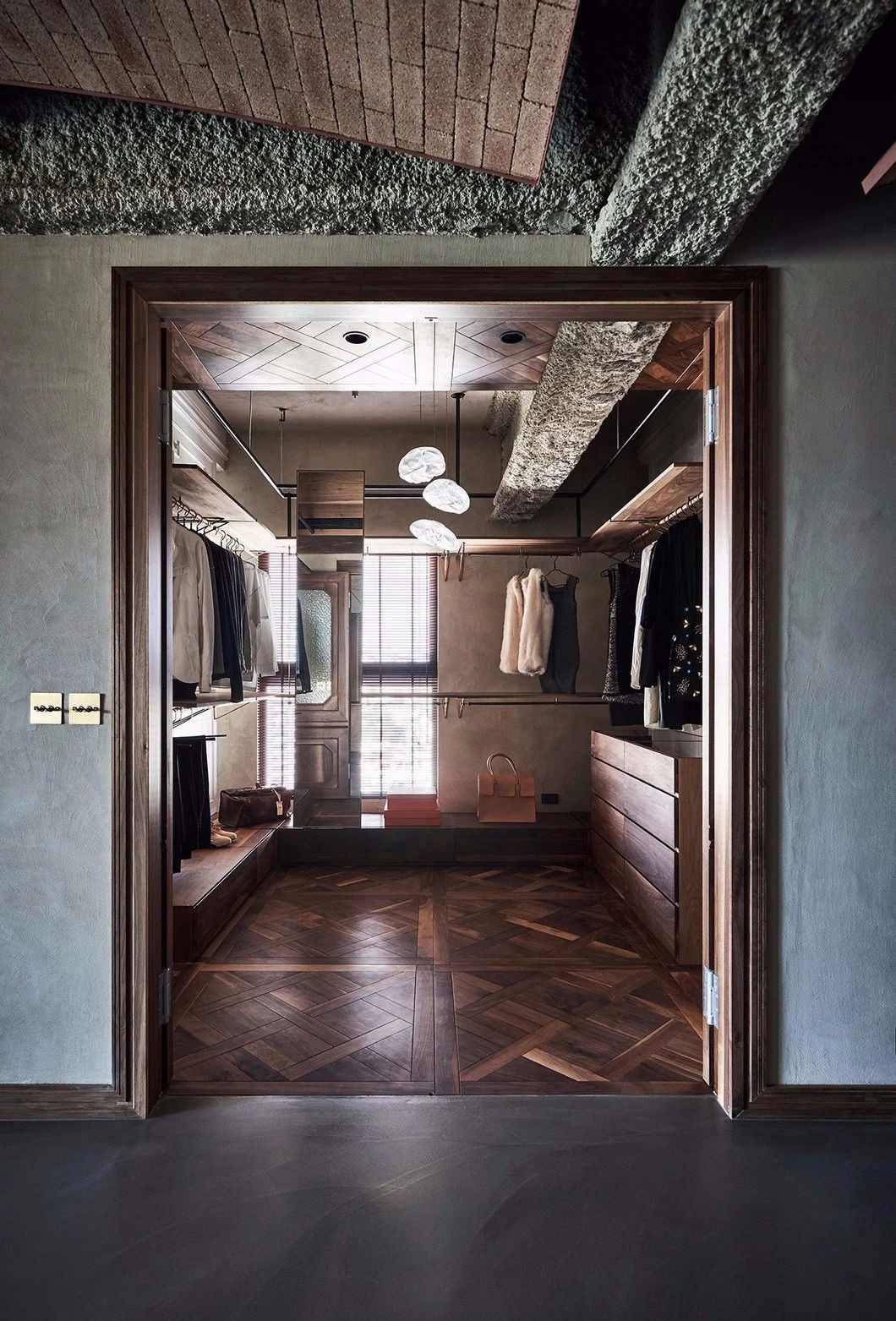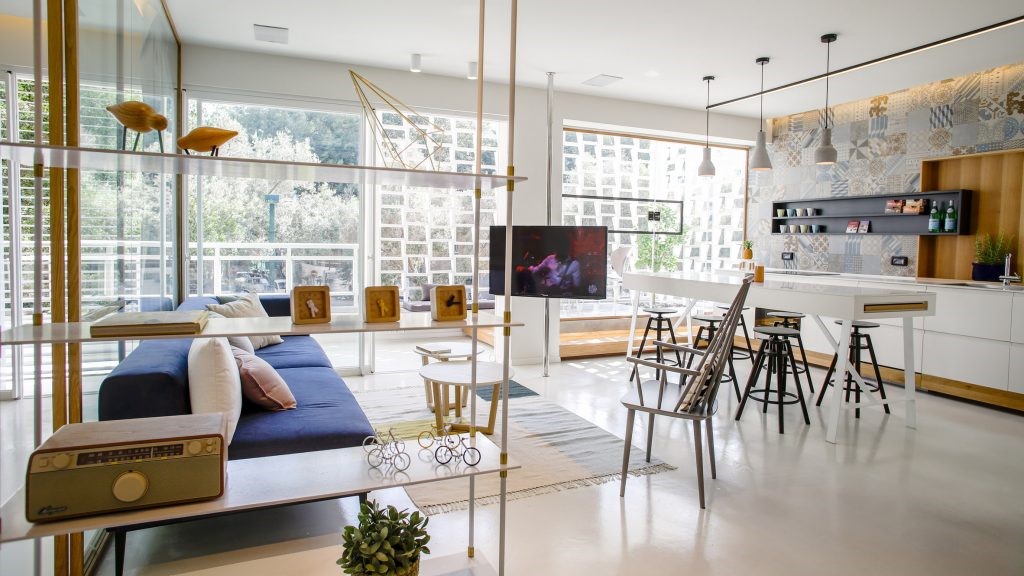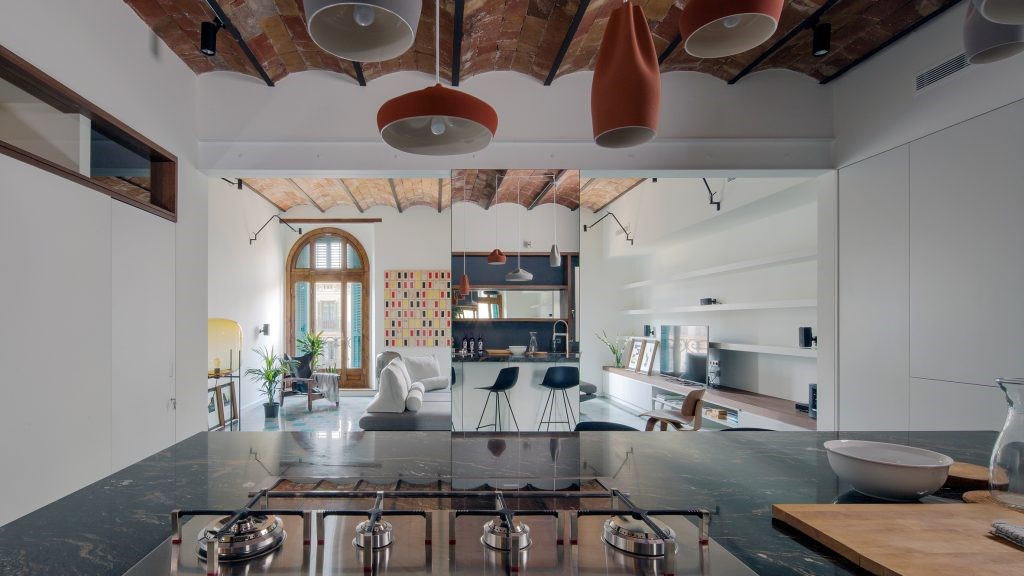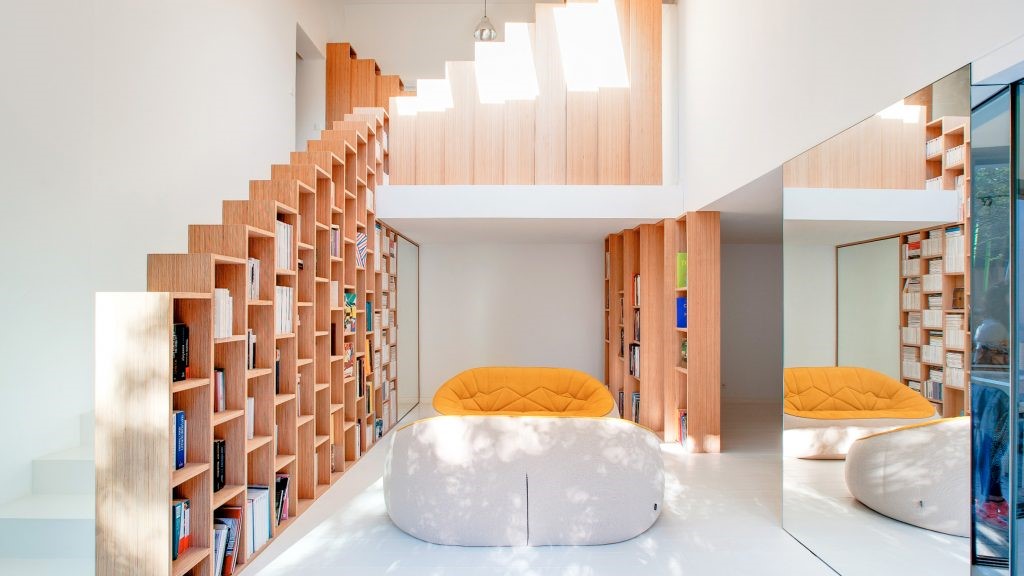Buddhist Retreat: Desert Sanctuary in Utah for Tibetan Buddhist Practice
2016-10-26 20:35
Buddhist Retreat is a contemporary residence designed by Imbue Design, located in Grover, Utah, USA.
佛教隐藏室是美国犹他州格罗弗市由Inbue设计的当代住宅。
Emanating from a high-desert hillside amidst rugged volcanic rock and twisted juniper trees the Buddhist Retreat rises up and out toward a spectacular view Capitol Reef National Park. In addition to its function as a secondary residence, this dwelling in Grover, Utah was designed to be a desert sanctuary for Tibetan Buddhist practice. Its intent is to intertwine everyday activities with singular moments that are typically reserved for spiritual rituals, thus heightening and sanctifying the act of living. Whether it be framing the detail of an ancient pinion pine or extending out into the spatial expanse of a wrapping panorama, the Buddhist Retreat’s purpose is to creating rich and diverse moments of living.
从一个高沙漠山坡,在崎岖的火山岩和扭曲的杜松树,佛教隐居上升,向一个壮观的风景,国会礁国家公园。除了作为第二居所的功能外,犹他州格罗弗的这座住宅还被设计成藏传佛教的沙漠避难所。它的目的是将日常活动与特殊时刻交织在一起,这些时刻通常被保留在精神仪式上,从而提高和圣化生活的行为。无论是描绘一棵古老的小松树的细节,还是延伸到一幅环绕全景的空间,佛教隐士的目的都是为了创造丰富多样的生活瞬间。
Flush with the ground at the top of the site, the entry deck of the house projects horizontally out into space toward the red rock gateway of the park as the topography slopes down toward the verdant valley below. The result is a space that suspends the user in a grand moment for group meditation, free and clear of visual and mental obstruction.
当地势向下面的青翠山谷倾斜时,房子的入口甲板与地面齐平,水平延伸到公园的红色岩石入口。其结果是一个空间,暂停用户在一个伟大的时刻共修,自由和清楚的视觉和精神障碍。
Down through the deck the user descends toward the entry into a space shaded from the desert sun by the deck above. This contrastingly intimate moment frames the most prominent details of the site: clusters of rugged junipers on one side, and exposed volcanic rocks on the other. Entering into the house, the main living space again directs the view outward through a floor-to-ceiling, wall-to-wall frame of the lush green valley and red plateau beyond. The operable glass wall disappears to further blur the line between interior and exterior, function and nature.
在甲板上,用户向下下降,朝向入口进入上面甲板遮蔽沙漠太阳的空间。这与之形成鲜明对比的时刻构成了该地点最突出的细节:一侧是由坚固的垃圾群组成,另一侧是裸露的火山岩。主生活空间再次进入房子,通过地板到天花板,墙壁到墙壁框架的茂盛的绿色山谷和红色高原。可操作的玻璃墙消失,进一步模糊内部和外部之间的线条,功能和性质。
The master and guest bedrooms again endeavor to create contrast enclosing the view by walls ancient pinion pines just beyond the windows and glass doors. Ascending up a vibrant red spiral stair, a lofted space with a ridgeline-view combines the office with a shrine for meditation.
主人和客人的卧室再次努力创造对比,围绕着墙壁,古老的小齿轮松树,就在窗户和玻璃门。上升到一个充满活力的红色螺旋楼梯,一个有山脊景观的倾斜空间,把办公室和冥想圣地结合在一起。
The main exterior walls supporting the meditation deck are clad in gabion cages filled with volcanic rock found at the site and the local vicinity. The rock not only ties the retreat to the site visually, but also absorbs and dissipates heat from the hot summer sun through thermal mass and increased surface area. The deck, made of naturally durable ipe wood, withstands harsh desert conditions and acts as a double roof system to mitigate solar heat gain. Standing seam steel offers a resilient counterpoint to the other rugged materials as well as the site’s beautifully rough nature. In lieu of A/C an operable skylight and whole house fan placed at the top of the stairwell create a heat chimney for exhausting hot air while low operable windows resupply with cooler air and cross ventilation. Photovoltaic roof panels supply the remote house with power while an onsite well supplies the purest of drinking water. When analyzed, the structure exceeds the highest EnergyStar rating.
支撑冥想甲板的主要外墙覆盖着在现场和当地附近发现的充满火山岩石的石堡笼。岩石不仅在视觉上把撤退与现场联系在一起,还通过热质量和增加的表面积吸收和驱散炎热的夏季太阳的热量。甲板由天然耐用的ipe木制成,经得起严酷的沙漠条件,并充当双屋顶系统,以减少太阳热量的增加。站立接缝钢提供了弹性对位与其他坚固的材料,以及网站的美丽粗糙性质。代替A/C,一个可操作的天窗和整个房扇放置在楼梯间顶部,创造一个热烟囱来排出热风,而低可操作的窗户再供给冷风和交叉通风。光伏屋顶面板为偏远的房屋供电,而现场的水井则提供最纯净的饮用水。在分析时,该结构超过了最高的能量星评级。
On the interior, locally sourced materials are used throughout. The museum white walls and dark concrete floors act as neutral canvas onto which the owner will apply color through her own selection of furniture, local artwork, and spiritual paraphernalia.
在内部,当地来源的材料在整个过程中使用。博物馆的白色墙壁和深色混凝土地板充当中性帆布,主人将通过自己选择的家具、当地艺术品和精神用具,在上面涂上颜色。
Architects: Imbue Design Project: Buddhist Retreat Location: Torrey, Utah, United States Structural Engineer: Shen Engineering Construction area: 1350.0 ft2 / 125sqm Photography: Imbue Design
建筑师:灌输设计项目:佛教隐逸地点:美国犹他州托瑞,美国结构工程师:沈工程建筑区:1350.0英尺2/125平方米摄影:注入设计
Thank you for reading this article!
 举报
举报
别默默的看了,快登录帮我评论一下吧!:)
注册
登录
更多评论
相关文章
-

描边风设计中,最容易犯的8种问题分析
2018年走过了四分之一,LOGO设计趋势也清晰了LOGO设计
-

描边风设计中,最容易犯的8种问题分析
2018年走过了四分之一,LOGO设计趋势也清晰了LOGO设计
-

描边风设计中,最容易犯的8种问题分析
2018年走过了四分之一,LOGO设计趋势也清晰了LOGO设计




















































